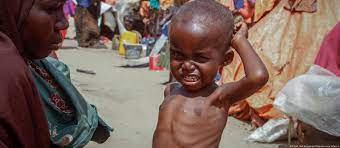Definisi
Gagal tumbuh adalah kondisi dimana berat badan atau kecepatan pertambahan berat badan anak berada jauh dibawah batas normal untuk usia dan jenis kelaminnya. Bayi atau anak yang gagal tumbuh jelas terlihat lebih kecil atau pendek dari anak seumurannya. Sementara itu, remaja yang gagal tumbuh dapat memiliki tinggi badan yang kurang atau tampak tidak mengalami perubahan pubertas yang umumnya terjadi saat masa remaja. Namun, terdapat variasi yang luas mengenai apa yang disebut pertumbuhan dan perkembangan normal.
Penyebab
Banyak penyebab terjadinya gagal tumbuh pada seseorang, mulai dari yang meliputi genetik, kelainan hormonal, penyakit sistemik, dan penyerapan makanan yang buruk. Penting untuk menentukan apakah gagal tumbuh disebabkan oleh gangguan medis atau faktor pada lingkungan, seperti kekerasan atau penelantaran.
Walaupun pada umumnya sulit untuk menentukan secara pasti penyebab terjadinya gagal tumbuh, namun beberapa hal yang dapat menyebabkan gagal tumbuh meliputi:
- Riwayat tinggi badan pendek pada keluarga
- Pubertas yang tidak normal (pubertas yang terlambat dan pubertas yang lebih cepat)
- Komplikasi selama masa kehamilan, seperti gangguan pertumbuhan janin
Selain itu, berikut beberapa kondisi kesehatan yang juga dapat mempengaruhi terjadinya gagal tumbuh pada seseorang:
- Abnormalitas kromosom, seperti sindrom Down dan sindrom Turner
- Gangguan pada sistem endokrin seperti diabetes, kekurangan hormon tiroid, kekurangan hormon pertumbuhan, atau kekurangan hormon lainnya
- Kerusakan pada otak atau sistem saraf pusat yang dapat menyebabkan kesulitan makan pada bayi
- Gangguan jantung atau paru, yang dapat mempengaruhi pergerakkan atau penyaluran oksigen dan nutrisi di dalam tubuh
- Anemia atau kelainan darah lainnya
- Gangguan saluran cerna yang menyebabkan gangguan penyerapan, atau kekurangan enzim pencernaan
- Peradangan saluran cerna jangka panjang dan refluks gastroesofagus
- Infeksi jangka panjang (kronis)
- Penyakit metabolik
- Kelainan tulang
Terdapat lebih dari 50 penyakit tulang yang mempengaruhi tinggi dan pertumbuhan, kebanyakan dari penyakit tulang tersebut bersifat genetik. Penyakit yang paling sering adalah akondroplasia, suatu tipe dwarfism dimana lengan dan tungkai anak lebih pendek dibandingkan dengan panjang tubuhnya. Proporsi tubuh lain yang dipengaruhi seperti ukuran kepala yang lebih besar dibandingkan ukuran batang tubuh yang berukuran normal.
Mau tahu informasi dan artikel kesehatan mengenai penyakit akondroplasia? Cek di sini, ya!
Mau tahu informasi dan artikel kesehatan mengenai penyakit refluks gastroesofagus? Cek di sini, ya!
Faktor Risiko
Beberapa faktor yang dapat meningkatkan risiko gagal tumbuh adalah:
- Masalah emosional sebagai akibat dari penarikan, penolakan, atau pertengkaran orang tua
- Masalah ekonomi yang mempengaruhi nutrisi, kondisi tempat tinggal, dan sikap orang tua
- Paparan terhadap infeksi, parasite, dan toksin
- Kebiasaan makan yang buruk, seperti makan di depan televisi dan tidak memiliki waktu makan yang teratur
Gejala
Secara umum, kecepatan pertambahan berat dan tinggi badan secara bertahap masih lebih penting dibandingkan dengan pengukuran berat atau tinggi badan pada satu waktu saja.
Bayi atau anak yang gagal tumbuh memiliki tinggi badan, berat badan, dan lingkar kepala yang tidak sesuai dengan kurva pertumbuhan standar. Pertumbuhan akan mengalami perlambatan atau berhenti walau sebelumnya mengalami pertumbuhan yang normal.
Pada anak yang mengalami gagal tumbuh, akan ditemukan keterlambatan perkembangan pada:
- Kemampuan fisik, seperti berguling, duduk, berdiri, dan berjalan
- Kemampuan mental dan sosial
- Karakteristik seks sekunder (terlambat muncul pada anak remaja)
- Gangguan belajar
- Mudah lelah atau lemas
- Mudah marah
Diagnosis
Diagnosis gagal tumbuh harus ditegakkan oleh dokter anak Anda, dan metode yang digunakan akan bergantung pada gejala anak Anda. Dokter akan menanyakan riwayat medis lengkap termasuk mengenai tinggi dan riwayat kesehatan yang ada pada keluarga kemudian melakukan pemeriksaan fisik. Selain itu, dokter dapat melakukan pemeriksaan yang meliputi:
- Observasi kesehatan dan pertumbuhan anak Anda dalam jangka waktu tertentu
- Pemeriksaan darah (untuk menilai adanya gangguan hormonal, kromosom, atau penyakit lainnya yang berhubungan dengan gagal tumbuh)
- Scan kelenjar pituitari, yang memproduksi dan mengatur hormon pertumbuhan (untuk mendeteksi abnormalitas)
- X-ray tangan atau pergelangan tangan anak (untuk membandingkan perkembangan tulang dengan tinggi dan usia kronologis anak serta menentukan potensi pertumbuhan)
Penting untuk mendiagnosa gangguan pertumbuhan secara dini agar dapat segera ditangani.
Tata Laksana
Penanganan bergantung pada penyebab dari keterlambatan pertumbuhan dan perkembangan. Jika suatu kondisi medis menyebabkan gangguan pertumbuhan, maka terapi untuk kondisi tersebut dapat mengatasi gangguan tumbuh.
Terapi pengganti hormon sering menjadi bagian dari tata laksana untuk kondisi ini. Rencana terapi dapat berupa suntikan hormon setiap hari atau minggu. Kabar baiknya, terapi ini sering menunjukkan perbaikan pertumbuhan yang signifikan. Selama tahun pertama terapi, anak yang kekurangan hormon pertumbuhan akan mengalami pertambahan tinggi badan rata-rata sebanyak 10 cm, namun angka ini lebih kecil pada anak dengan gangguan pertumbuhan lainnya.
Keterlambatan pertumbuhan akibat faktor nutrisi dapat ditangani dengan mengedukasi orang tua untuk menyediakan diet yang seimbang. Dokter dapat merekomendasikan jenis makanan dan alternatif sesuai kandungan nutrisi yang diperlukan.
Jika faktor psikososial menjadi salah satu penyebab gangguan, terapi harus meliputi perbaikan dinamik keluarga dan kondisi tempat tinggal. Sikap dan perilaku orang tua dapat berkontribusi terhadap masalah anak dan perlu untuk diperiksa. Pada kasus tertentu, seorang anak mungkin memerlukan perawatan di rumah sakit untuk implementasi rencana terapi yang komprehensif yang meliputi terapi medis, perilaku, dan psikososial.
Setelah pertumbuhan anak Anda mencapai normal, anak mungkin tetap membutuhkan bantuan untuk menjaga pertumbuhan fisik dan mentalnya agar tetap normal. Anak mungkin membutuhkan bantuan fisioterapi, terapi wicara, terapi okupasi, dan konseling gizi.
Komplikasi
Seorang anak yang gagal tumbuh berisiko mengalami masalah seperti:
- Tinggi badan yang pendek
- Masalah perilaku dan emosional
- Keterlambatan perkembangan
- Gangguan berpikir
- Masalah pada belajar
Pencegahan
Pemeriksaan pertumbuhan dan perkembangan anak secara teratur dapat mencegah terjadi gagal tumbuh, atau setidaknya membantu untuk diagnosis dan pemberian terapi secara dini. Hal ini dapat dimulai sejak masa kehamilan dan dilanjutkan sampai masa dewasa. Dokter akan mencatat pertumbuhan anak Anda pada kurva pertumbuhan sesuai dengan usia dan jenis kelamin anak.
Seorang anak yang mengalami gagal tumbuh dapat terlihat lebih kecil dibandingkan anak seusianya dengan jenis kelamin yang sama. Pola pertumbuhannya juga dapat terlihat tidak stabil. Melakukan pemeriksaan rutin dengan dokter penting untuk mendapatkan analisis pertumbuhan anak Anda yang akurat.
Kapan Harus ke Dokter
Jika Anda menyadari anak Anda mengalami kesulitan makan, atau terlihat tambah kurus atau tidak mengalami pertambahan berat badan sesuai dengan harapan Anda, maka sebaiknya Anda berkonsultasi ke dokter. Menemui dokter sesegera mungkin dapat mengurangi kekhawatiran Anda dan memungkinkan anak untuk mendapatkan dukungan nutrisi dan kesehatan yang tepat sebelum terjadi gangguan dalam pertumbuhan dan perkembangan anak.
Mau tahu informasi seputar penyakit lainnya? Cek di sini, ya!
- dr. Lukita Tarigan
Failure to thrive. Failure to Thrive | Johns Hopkins Medicine. (2019, November 19). Retrieved January 19, 2023, from https://www.hopkinsmedicine.org/health/conditions-and-diseases/failure-to-thrive
Growth problems. Growth Problems | Boston Children's Hospital. (n.d.). Retrieved January 19, 2023, from https://www.childrenshospital.org/conditions/growth-problems
Default - Stanford Medicine Children's health. Stanford Medicine Children's Health - Lucile Packard Children's Hospital Stanford. (n.d.). Retrieved January 19, 2023, from https://www.stanfordchildrens.org/en/topic/default?id=failure-to-thrive-90-P02297











